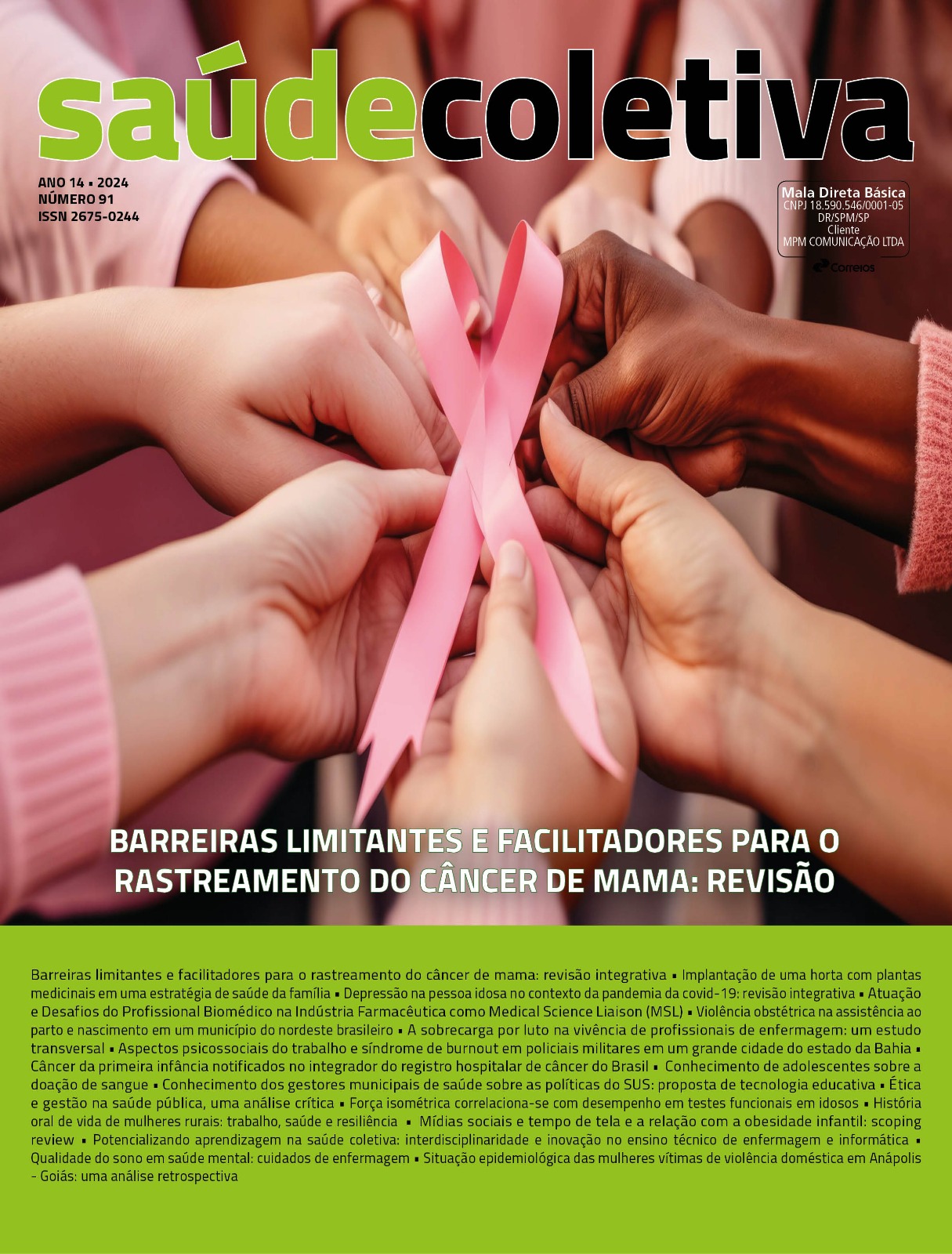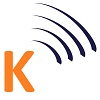ENHANCED LEARNING IN PUBLIC HEALTH: INTERDISCIPLINARITY AND INNOVATION IN TECHNICAL EDUCATION IN NURSING AND COMPUTER SCIENCE
DOI:
https://doi.org/10.36489/saudecoletiva.2024v14i91p13598-13611Keywords:
Public Health; Learning; teaching material; teaching; nursing.Abstract
This work describes the interdisciplinary experience of teachers of technical Nursing and IT courses at a private school in Belo Horizonte, which has a partnership with the Trilhas do Futuro Program, created and administered by the Minas Gerais Department of Education. The guiding objective was to present the constructive and collaborative structuring by developing a messaging artifact, a chatbot structured in an applied way with the students of the IT course, in partnership with the content and context of the students of the Nursing course, for the health discipline Collective, focused on learning. The bot as a facilitator in this process, creating spaces for these students to actively build their knowledge. Seeking to apply models centered on the student and their experience for interaction in the (re)construction of the discipline's information and its content, taking into account the challenge of producing contextualized conversational interfaces. The teachers' initiative sought collective creation, the use of technologies, exploratory and descriptive methodology, the use of Design Thinking and pedagogical innovation, in the teaching-learning process. The construct was titled "Susan", whose name was strategically chosen to bring the bot closer to the acronym SUS (Sistema Único de Saúde), widely known and relevant in the context of public health. It is concluded that the construction of a conversational artifact, based on the perspectives of educational and informational practices, contributes to the student's interaction with knowledge through the constructed bot, by considering its evolution during the design process.
Descriptors: Public Health; Learning; teaching material; teaching; nursing.
References
UNESCO, 2013. O futuro da aprendizagem móvel. Paris, França. 2013. International Commission on the Futures of Education. Brasília. Disponível em: https://unesdoc.unesco.org/ark:/48223/pf0000228074. UNESCO Digital Library. Acesso em: 15.06.2023
UNESCO, 2022. A Unesco é uma agência da ONU fundada em 1945 que tem como objetivo a cooperação internacional para o desenvolvimento nas áreas da saúde, da cultura e da educação. International Commission on the Futures of Education. Brasília. Disponível em: https://brasilescola.uol.com.br/geografia/unesco.htm. Acesso 10.06.2023
UNESCO, 2022. International Commission on the Futures of Education. Brasília. Disponível em: http://portal.mec.gov.br/encceja-2/480-gabinete-do-ministro- 1578890832/assessoria-internacional-1377578466/20747-unesco. Acesso em 14/06/2023.
AYRES, M. A História dos Chatbots. Medium Corporation. 2018. Disponível em: https://medium.com/@marcelayres/a-hist%C3%B3ria-dos-chatbots-c9deffc84069. Acesso em 16 mai 2023.
CALADO, C. Bots Brasil. O que é um chatbot? Medium Corporation. 2016. Disponível em: https://goo.gl/91wye4. Acesso em: 07 mai. 2023.
MORIN, E. Os sete saberes necessários à educação do futuro. 2 ed. São Paulo: Cortez; Brasília, DF: UNESCO, 2014.
BROWN, T. Design Thinking: Uma metodologia poderosa para decretar o fim das velhas ideias. São Paulo: Elsevier Editora, 2010.
Congresso Nacional. Constituição Federativa do Brasil 1988. Diário Oficial da União, Brasília, Distrito Federal, 5. out.1988
Lei 8080 de 19 de setembro de 1980. Dispõe sobre as condições para a promoção, proteção e recuperação da saúde, a organização e o funcionamento dos serviços correspondentes e dá outras providências. Diário Oficial da União, Brasília, Distrito Federal, 20 de setembro de 1990, a.
MATUMOTO, S.; MISHIMA, S. M.; PINTO, I. C. Saúde Coletiva: um desafio para a enfermagem. Cadernos de Saúde Pública, v. 17, n. 1, p. 233–241, jan. 2001.
CAVALCANTI, C. M. C. Design Thinking como metodologia de pesquisa para concepção de um ambiente virtual de aprendizagem centrado no usuário. In: Simpósio Internacional de Educação a Distância, 2014, São Carlos. Anais [...]. São Carlos: UFSCar, 2014, p.11. Disponível em: http://sistemas3.sead.ufscar.br/ojs/index.php/2014/article/view/518/237. Acesso em: 1 jun. 2023.
BASSANI, P. B. S.; MAGNUS, E. B. Práticas de curadoria como atividades de aprendizagem na cultura digital. In: SANTOS, Edméa O.; SAMPAIO, Fábio F.; PIMENTEL, Mariano (Org.). Informática na Educação: fundamentos e práticas. Porto Alegre: Sociedade Brasileira de Computação, 2021. (Série Informática na Educação, v.1) Disponível em: https://ieducacao.ceie-br.org/curadoria. Acesso em 20/03/2023.
MILIOZZI, J. Chatbots: conheça a história dessa fascinante tecnologia. Live University Ibramerc. dez. 2017. Disponível em: https://ibramerc.liveuniversity.com/2017/12/15/chatbots-e-a-historia-dessa-fascinante- tecnologia/. Acesso em 05 mai.2023.
NORMAN, D. Cognitive artifacts. In: CARROLL, JOHN MILLAR (Org.). Designing Interaction: psychology at the human-computer interaction interface. New York: Cambridge University Press, 1991.
Oitavo Congresso GIFE: Por um Investimento Social Transformador, 2014. Acesso em https://www.youtube.com/watch?v=BdQ_ovI8YZo. Acesso 10.06.2023.
SANTOS, B. de S. A Cruel pedagogia do Vírus. Coimbra: Edições Almedina, S.A., 2020. Disponível em: A Cruel Pedagogia do Vírus (cidadessaudaveis.org.br). Acesso em: 07/10/2022.
SCHLEICHER, A. Primeira classe: como construir uma escola de qualidade para o século XXI. Tradução de Dani Gutfreund e Lenice Bueno. Paris: OECD Publishing; São Paulo: Fundação Santillana, 2019. Disponível em: https://www.moderna.com.br/lumis/portal/file/fileDownload.jsp?fileId=8A808A826687 85E30166A2914DF00243. Acesso 20.06.2023
SEVERINO, A. J. Metodologia do trabalho científico. 23. ed. rev. e atual. São Paulo: Cortez, 2013.
TEZANI, T. C. R. A educação escolar no contexto das tecnologias da informação e da comunicação: desafios e possibilidades para a prática pedagógica curricular. Revista Faac, Bauru, v.1, n.1, p. 35-45, abr/set. 2011. Disponível: https://www3.faac.unesp.br/revistafaac/index.php/revista/article/viewF ile/11/5. Acesso em 15.06.2023







